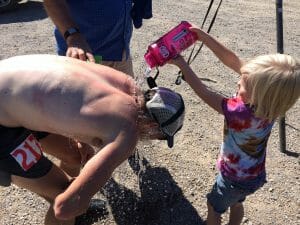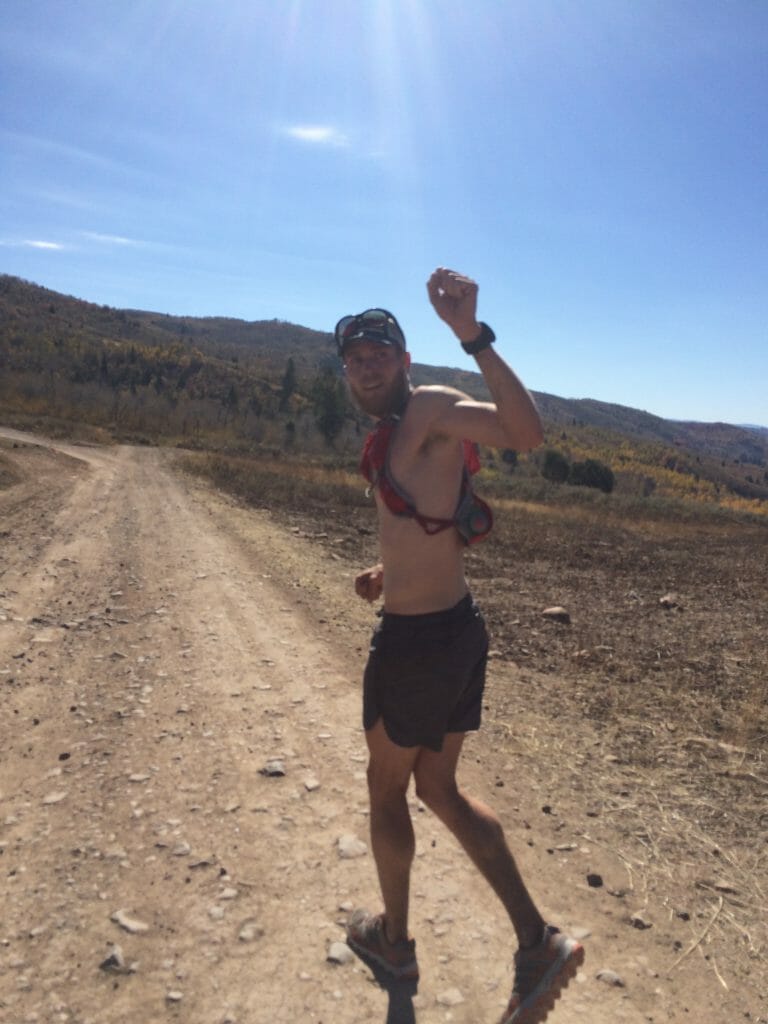The heat was oppressive, no shade to be found. I was 40 miles into the Bear 100 and felt terrible. I was hot, tired, and felt completely wrecked. As I pondered whether or not I could continue, I sat in the creek above the aid station trying to get my core temperature down. Three weeks prior I had run one of the best races of my life at the Rut 50K. During the Rut I felt strong, powerful, fast. My day at the Bear was about as opposite as I could imagine. Early in the race I felt strong, but I faded very quickly. Sitting in that creek I started to question my training.

The summer leading up to the Rut and the Bear, a time in the not-so-distant past, I fell into one of the most romanticized ideas in trail running: running by feel. This is often touted as the higher road. The path. The way for those who are above a rigid structure. I was drawn to this disregard for structure, running a lot or a little based simply by how I felt. Perhaps the remnants of a rebellious youth, burnout, or maybe even a little laziness pulled me to this idea. In the short term, this nonstructured approach was liberating, and led to massive amounts of volume because, let’s face it, I love to run. Unfortunately, this had serious consequences. My unstructured approach led to decreasing fitness, an indifference about running, and a painful crash and burn when it turned out that something was lacking.
Having a well-designed plan provides direction in training. It follows well-understood principles of training stress and training adaptations. It allows for rest days. And most importantly, every workout in the plan is there for a reason. Each action I take in my training, whether it be distance, intensity, or recovery, serves a purpose, all orchestrated by the coach.
A solid training plan will lead to improvement. With indifference sidelined, each purposeful workout builds momentum. Quality reigns over quantity. As the plan progresses, the athlete sees gains and improvements in benchmarks.
A friend of mine is often heard saying, “You get strong when you take time to recover.” For me this may be the most important element of having a plan. After periods of buildup the body needs time to absorb the hard work. This can take the form of a recovery run or swim the day after a hard workout, or a recovery week after a buildup of several weeks. The time when the training stimulus is strategically removed is when the body will build and emerge stronger. That growth was very overlooked when I was running by feel.
After spending too much time doing unstructured running, I started following a training plan, and then I started working with coach Scott Johnston. Since then I have seen consistent progress and improvement. I continue to feel motivated, even when training is hard, because there are noticeable results. I come to starting lines prepared and competitive. Training with a plan has been far more fulfilling and rewarding than I would have imagined.
Nine months after my Bear 100 implosion, I crossed the finish line of the Tromso Skyrace in Norway. It was my second race of the season and I felt awesome. I raced against some of the very best trail runners in the world and felt strong throughout the race. I was only nine months into the new training program with Scott, but the results of a year with a training plan and those crucial months of coaching, training, and rest were obvious. I finished off last year racing several more races, with similar results and most importantly with a satisfaction of increased fitness and feeling better overall during the races. After a break from running after the end of the season, I am back now. I’ve set lofty goals and I know this year will be even better than the last.
-by Uphill Athlete Luke Nelson

